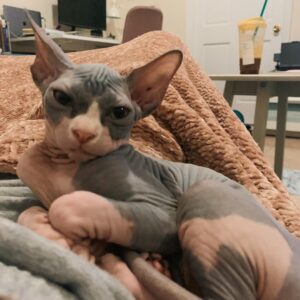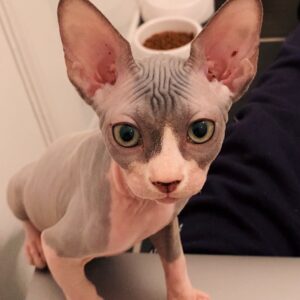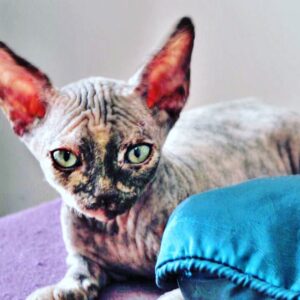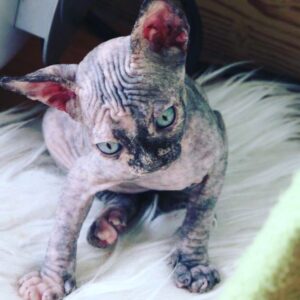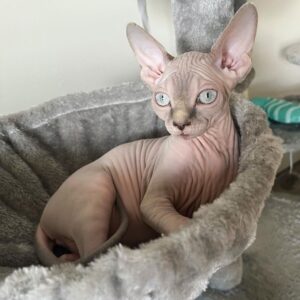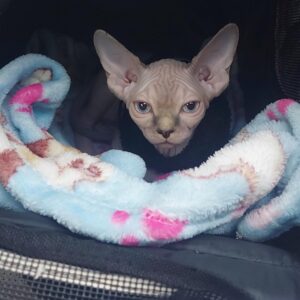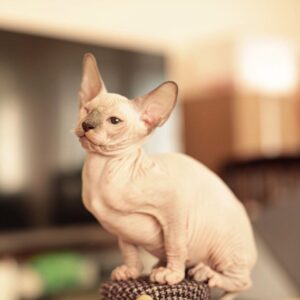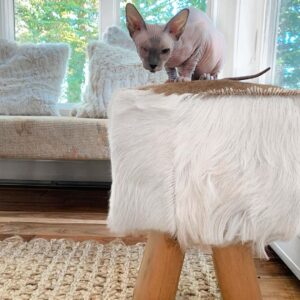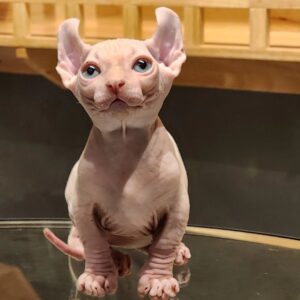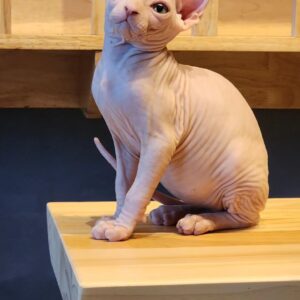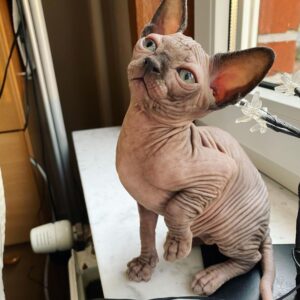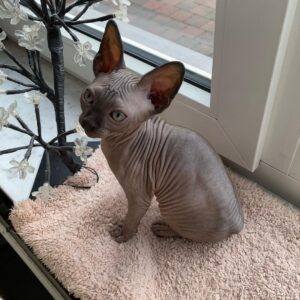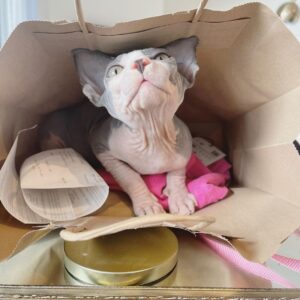sphynx cat for sale | cats for sale | sphynx cats for rehoming | odd eyed sphynx kittens for sale | black sphynx cat | bengal cat for sale | retired sphynx cats for sale | sphynx kittens for sale | black sphynx cat | sphynx cat with hair | free sphynx kittens for adoption | hypoallergenic cats for sale
The sphynx, also known as the Canadian hairless, was first introduced in Toronto, Canada in 1966 when a naturally occurring genetic mutation resulted in a hairless kitten in a litter of domestic shorthair kittens. The sphynx as we know it today is the result of carefully breeding these hairless cats to normal-coated cats and then breeding their progeny back to other hairless cats, even if other hairless kittens had been created before this. a procedure that, according to Cattime, has expanded the gene pool to create a genetically resilient breed of cat in addition to producing the desirable breed qualities. However, the sphynx was not permitted to compete in the championship class until 2002 by the Cat Fanciers’ Association. Subsequently, other cat associations expeditiously adopted this stance.
If the sphynx looks familiar to you, it could be Ted NudeGent, who played Mr. Bigglesworth, the cat that belonged to Dr. Evil in the Austin Powers films. Additionally, Jennifer Aniston’s character Rachel from the television series Friends once acquired a sphynx.
The sphynx’s peculiar appearance may draw attention and even turn off some people, but their personalities more than make up for their lack of fur. The majority of sphynx owners will tell you that they fell in love with their cat, who turned out to be a delightful pet, despite the fact that they are frequently drawn to the shock value of owning a hairless cat at first, not to mention the absence of shedding to deal with. You need look no further than the sphynx if you’re searching for an affectionate and entertaining companion.
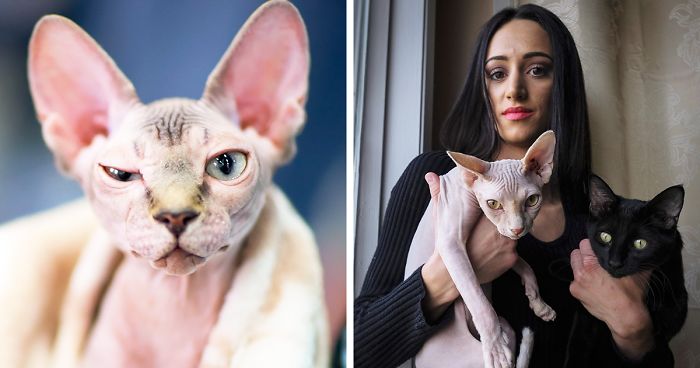
Personality:
The sphynx cat is an energetic, acrobatic performer who loves to show off for attention. She has an unexpected sense of humor that is often at odds with her dour expression. Friendly and loving, this is a loyal breed who will follow you around the house and try to involve herself in whatever you’re doing, grabbing any opportunity to perch on your shoulder or curl up in your lap. As curious and intelligent as she is energetic, these traits can make her a bit of a handful. For her own safety, the sphynx does best as an exclusively indoor cat, and generally gets along well with children other pets.
Living With:
The sphynx cat is a strong and hardy breed with few health problems. Although the breed doesn’t have any genetic disease predispositions, a few health conditions have been known to affect sphynx cats, including hypertrophic cardiomyopathy (HCM), which is a disease that causes thickening of the heart muscle and can be detected with an echocardiogram, and hereditary myopathy, a condition affecting muscle function, according to Vetstreet. Sphynx cats are sometimes also prone to skin conditions such as urticaria pigmentosa, which causes crusty sores to form on the body. This breed is also prone to periodontal disease and should be provided with regular teeth brushing and dental checkups.
When adopting or buying a sphynx cat, avoid breeders who refuse to offer a health guarantee on kittens or who make claims that their line is guaranteed HCM-free. Although this condition isn’t hereditary, it’s a fairly common form of heart disease in cats and no breeder can guarantee with absolute certainty that a cat won’t develop HCM.
This is an active breed who enjoys jumping, playing and climbing, as well as normal cat scratching. Scratching surfaces should be provided, along with places to climb and perch.
Despite her hairlessness, the sphynx is not considered hypoallergenic because her skin still produces normal amounts of allergy-causing dander. Sphynx cats tend to have oily skin and need to be bathed regularly to avoid becoming greasy. Special care should also be taken to protect these cats from sunburn and skin damage, as well as from cold temperatures, although the sphynx tends to be an expert at finding snug places to curl up and get warm. Nevertheless, sweaters and coats tailored to the sphynx cat are commercially available. The ears should also be checked weekly for wax buildup and gently wiped with a cotton ball dipped in a gentle ear-cleaning solution as necessary.
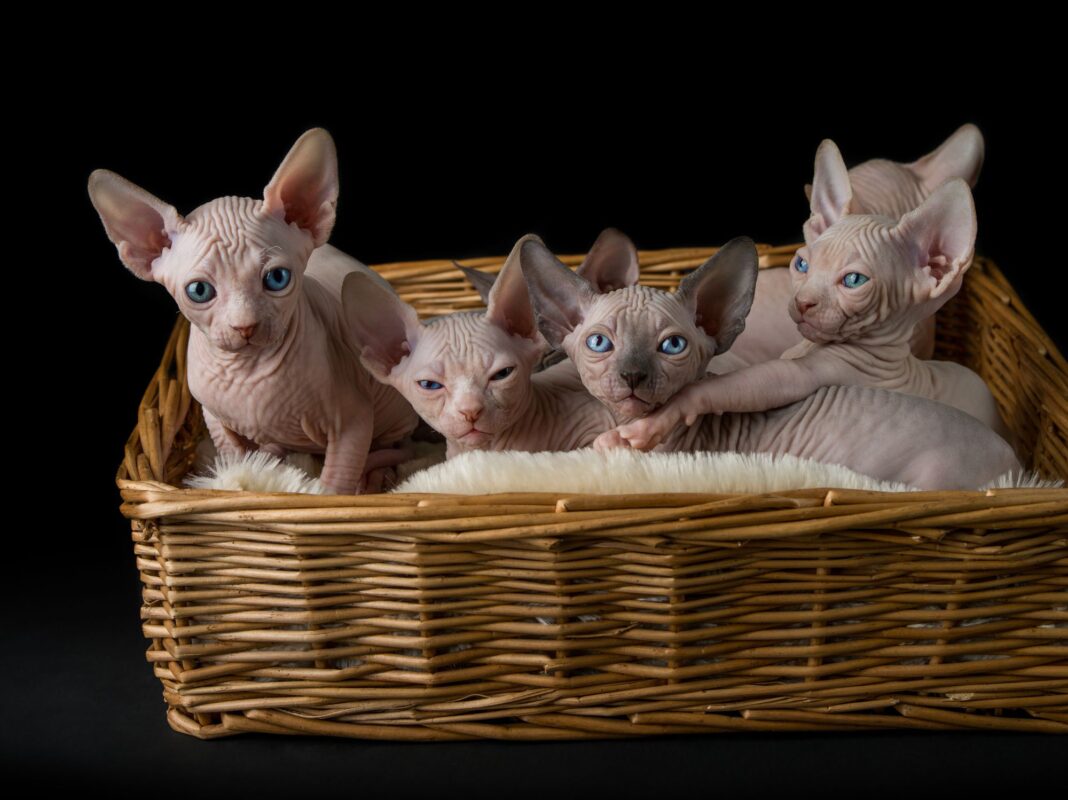
Traits
The Sphynx is one of a few hairless breeds. Striking and distinctive in appearance, they do not lack hair entirely. Fine hair covers the skin of most Sphynx, giving the skin a chamois or suede-like texture. Some short hair is usually present on the nose, ears and sometimes on toes and tail. Seasonal and hormonal changes in the cat may also effect hair development. Sphynx come in a variety of colors, including solid, particolored, tabby, tortoiseshell, and are recognized in all four of TICA’s categories: Traditional, Pointed, Mink, and Sepia. Their color is viewed on the pigment of the skin and on the few hairs they have.
AVAILABLE KITTENS
Welfare
The Sphynx Cat Club Welfare exists to help Sphynx cats that are in need for what ever reason whether the cat is just unhappy or the owner/s can no longer cope. Quite often it is through no fault of the cat but because of the owner’s circumstances change.
Amazing customer service
we offer free shipping for all orders across the state, for more information contact shynx kitten clowder admin , we shall elaborate more.
No Customs or Duty Fees!
We pay these fees so you don’t have to! The total billed at checkout is the final amount you pay, inclusive of VAT, with no additional charges at the time of delivery!

